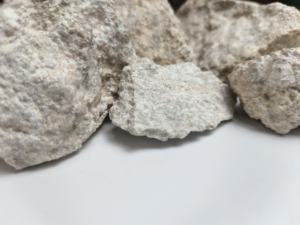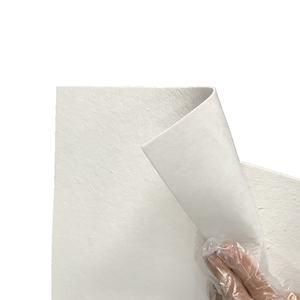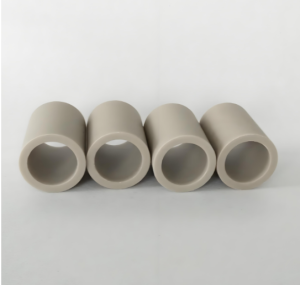Discover Premium Ceramic Products | Durability & Elegance United | Advanced Ceramics
1. Introduction
In a major development reported just yesterday, researchers at the University of Tokyo unveiled a breakthrough in high-temperature material processing using advanced silicon carbide crucibles capable of withstanding over 1,800°C without degradation—ushering in new possibilities for clean metal refining and semiconductor manufacturing. This innovation underscores the growing importance of silicon carbide in both industrial and consumer applications.

Silicon carbide crucibles have long been the go-to choice for foundries, labs, and even artisanal ceramic studios thanks to their unmatched durability, thermal shock resistance, and chemical inertness. But what exactly makes them so special—and why are they showing up not just in factories, but also in your kitchen?
2. What Is a Silicon Carbide Crucible?
A silicon carbide crucible is a container made from silicon carbide (SiC), a compound of silicon and carbon known for its extreme hardness and thermal stability. These crucibles are engineered to melt, hold, or process metals, glass, and other high-temperature materials without cracking or contaminating the contents.
Unlike traditional clay or graphite crucibles, silicon carbide versions offer superior resistance to oxidation and thermal cycling—making them ideal for repeated use in demanding environments like aluminum foundries or laboratory furnaces.
3. Industrial Applications Beyond the Crucible
3.1. High-Temperature Components
Beyond crucibles, silicon carbide is used to manufacture a wide range of industrial parts. These include silicon carbide ceramic columns, silicon carbide rings, silicon carbide burner nozzles, and silicon carbide bricks—all valued for their ability to endure extreme heat and corrosive atmospheres.

Silicon carbide tubes and porous ceramic tubes are commonly deployed in furnace linings, thermocouple protection, and high-temperature gas filtration systems. Variants like silicon carbide mullite tubes and silicon carbide zirconia tubes offer tailored performance for specific chemical or thermal conditions.
3.2. Precision Components and Discs
The versatility of silicon carbide extends to precision engineering. Silicon carbide discs—whether used as grinding discs, sanding discs, or even ceramic disc taps—are prized for their wear resistance. Specialized forms like silicon carbide piezoelectric ceramic discs and diamond grinding discs for pottery demonstrate the material’s adaptability across sectors.
In plumbing, silicon carbide ceramic disk taps and quarter-turn valves leverage the material’s hardness and smooth surface to ensure leak-free, long-lasting operation.
4. Silicon Carbide vs. Other Advanced Ceramics
4.1. Boron Carbide vs Silicon Carbide
When comparing boron carbide vs silicon carbide, both are ultra-hard ceramics, but silicon carbide offers better thermal conductivity and is more cost-effective for most industrial uses. Boron carbide excels in ballistic armor due to its lighter weight, but silicon carbide dominates in high-heat applications like crucibles and furnace parts.

4.2. Silicon Nitride: A Complementary Material
Silicon nitride is another high-performance ceramic often used alongside silicon carbide. While silicon nitride crucibles are less common, products like silicon nitride rings, plates, and custom heat shields are gaining traction in aerospace and semiconductor industries due to their excellent fracture toughness.
Factories specializing in silicon nitride crucible production are also ramping up output, driven by demand for high purity silicon nitride powder in advanced electronics and medical devices.
5. Unexpected Uses: Silicon Carbide in the Kitchen
You might be surprised to learn that silicon carbide isn’t just for factories—it’s making waves in culinary ceramics too. Brands are now crafting silicon carbide ceramic dinnerware that combines elegance with extreme durability.
From silicon carbide ceramic baking dishes and casserole dishes with lids to butter dishes, ramekins, and even children’s plates, this material is redefining oven-to-table cookware. Popular items include silicon carbide ceramic pie dishes, pasta bowls, salad bowls, and Christmas-themed platters—all oven-safe and resistant to chipping.
Notable examples include the silicon carbide baking dish Staub line and handcrafted silicon carbide ceramic plates in black, white, or blue-white porcelain styles. Whether you need a silicon carbide ceramic oven dish or a serving platter, the material delivers both function and aesthetic appeal.
6. Manufacturing and Customization
Silicon carbide components—from rbsic silicon carbide tile blocks to custom ceramic pipes—are typically formed through sintering or reaction bonding. The resulting products maintain dimensional stability even under rapid temperature changes.
Custom silicon carbide ceramic piping and plumbing components are increasingly used in aggressive chemical environments where metal would corrode. Similarly, silicon carbide ceramic tube insulators protect sensitive equipment in high-voltage or high-heat settings.
7. Conclusion
Silicon carbide crucibles represent just the tip of the iceberg for this remarkable ceramic. From industrial furnace linings and precision valves to elegant dinner plates and holiday platters, silicon carbide’s unique blend of strength, heat resistance, and versatility ensures its continued relevance across sectors. As material science advances, expect to see even more innovative applications of silicon carbide—and its ceramic cousins like silicon nitride—in both heavy industry and everyday life.
Our Website founded on October 17, 2012, is a high-tech enterprise committed to the research and development, production, processing, sales and technical services of ceramic relative materials such as 7. Our products includes but not limited to Boron Carbide Ceramic Products, Boron Nitride Ceramic Products, Silicon Carbide Ceramic Products, Silicon Nitride Ceramic Products, Zirconium Dioxide Ceramic Products, etc. If you are interested, please feel free to contact us.

